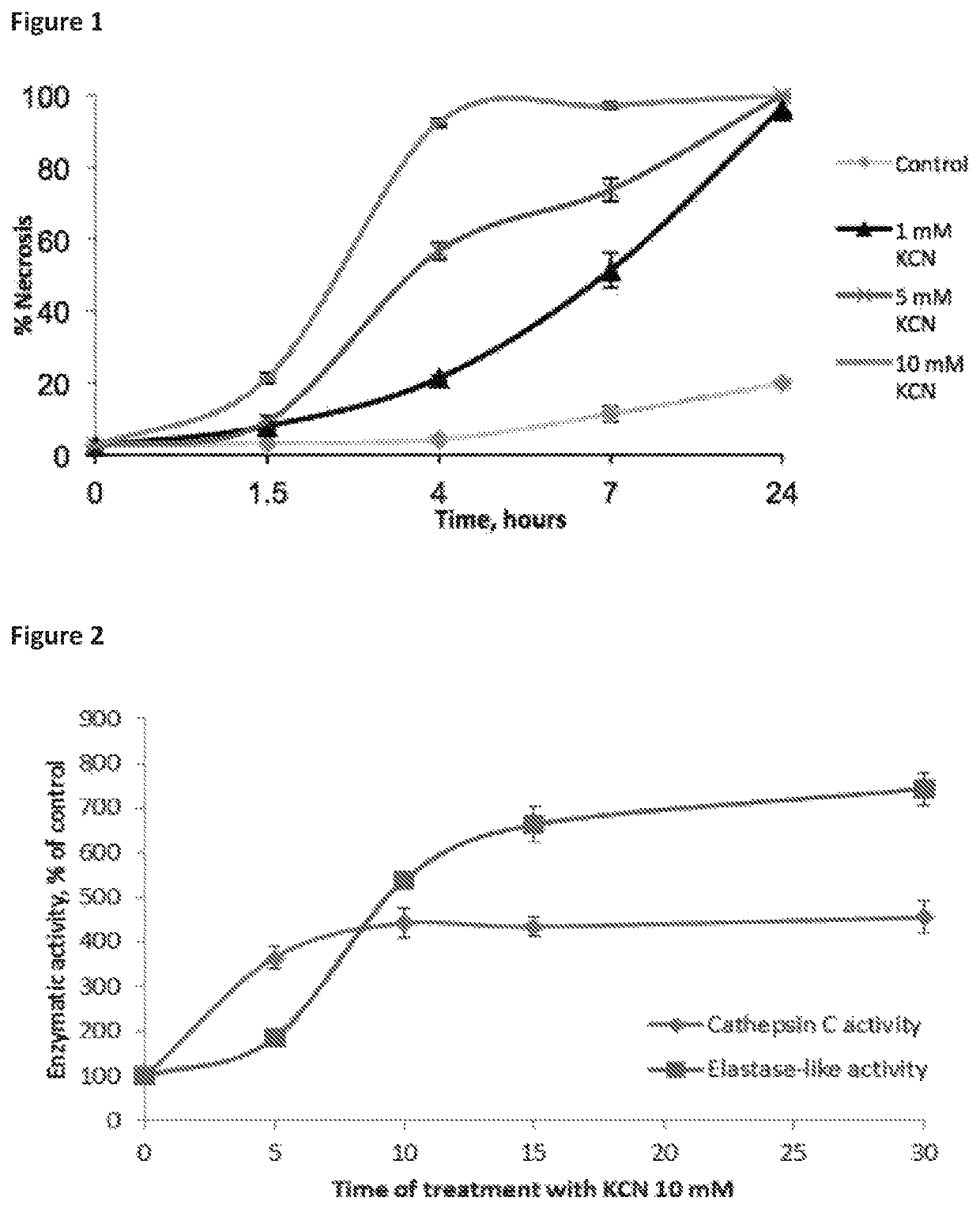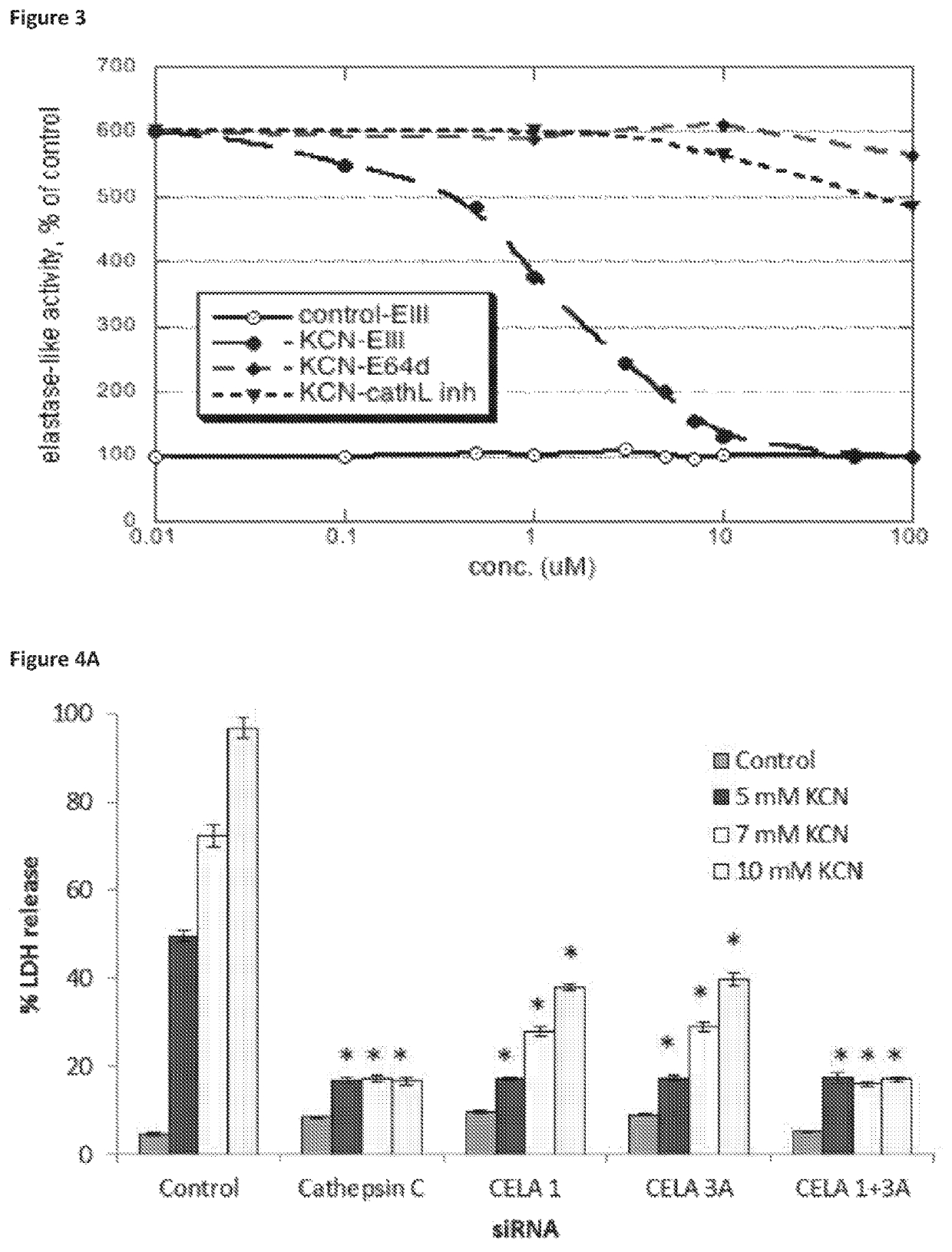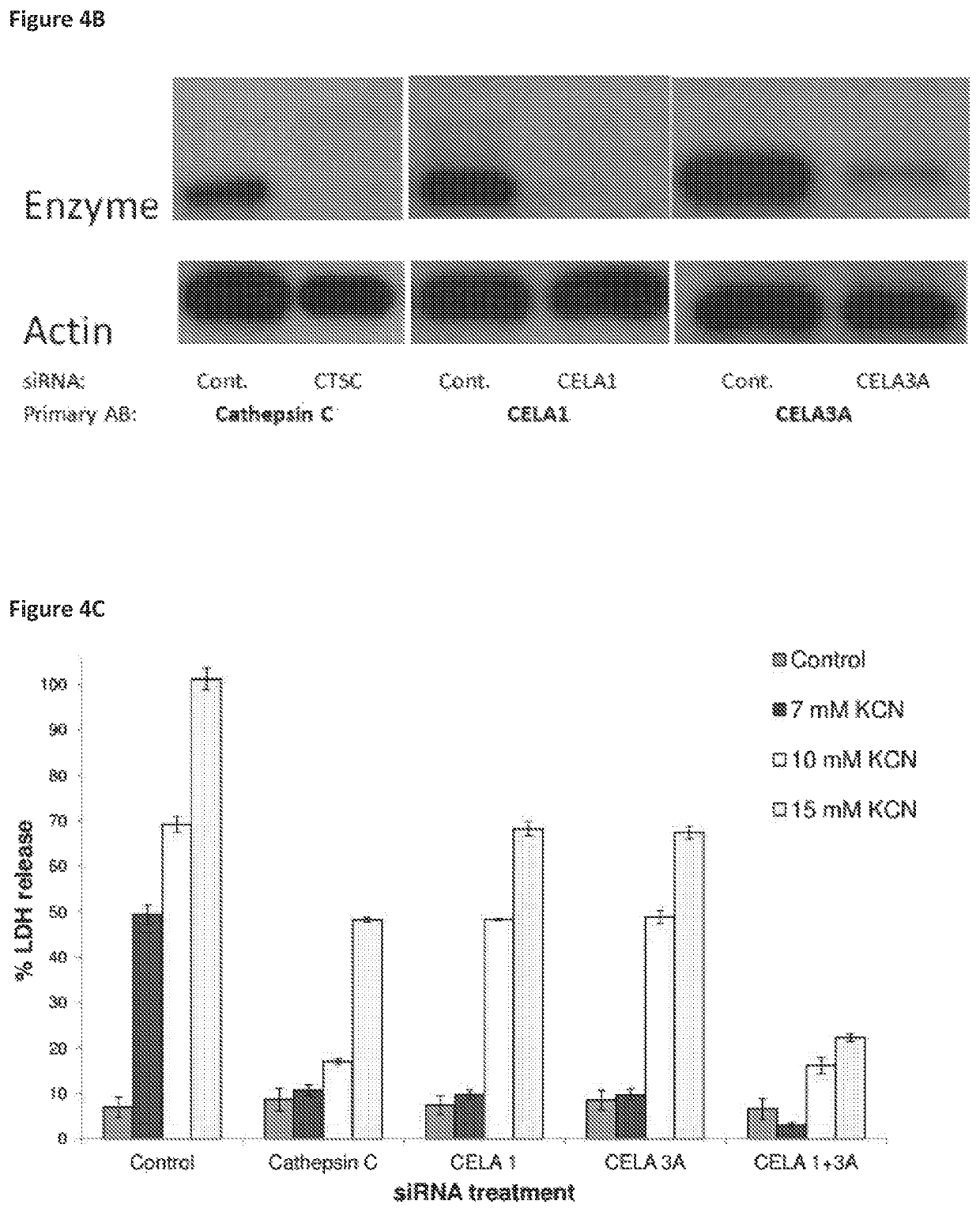Substituted thiazoles for preventing and/or treating cell or tissue necrosis
a technology of thiazoles and thiazoles, which is applied in the direction of drug compositions, immunological disorders, metabolism disorders, etc., can solve the problems of lack of proper treatment, significant morbidity and mortality, and mixed success, so as to prevent and/or treat cellular and/or tissue necrosis and high-effective cell prevention and treatment.
- Summary
- Abstract
- Description
- Claims
- Application Information
AI Technical Summary
Benefits of technology
Problems solved by technology
Method used
Image
Examples
example 1
Necrosis is Accompanied by Induction of Intracellular Elastase-Like Proteolytic Activity
[0526]The first experiment was carried out to determine whether necrosis is accompanied by induction of intracellular proteolytic activity. Necrosis in U-937 cells was induced by treatment with KCN, which kills cells by causing chemohypoxia. Dose and time dependent kinetics of KCN-induced necrosis in U-937 cells are shown in FIG. 1.
[0527]To further corroborate that activation of elastase-like proteolytic activity occurs during the necrotic cell death process, the activity thereof was determined in cell extracts prepared from KCN-treated U-937 cells as compared to controls, using MAAPV, an elastase specific substrate. In order to see at what stage of necrosis the elastase-like enzyme was activated, the enzymatic assay was performed in lysates prepared from U937 cells treated with KCN for different time intervals. FIG. 2 shows the time dependent induction of proteolytic activity induced by treatmen...
example 2
Transfection with siRNAs for Cathepsin C, CELA3A and CEL1 Protects Against Necrosis Induced Cell Death
[0531]In attempt to characterize the enzyme(s) that are activated at early stages of the necrotic process, the present inventors have utilized a library of siRNAs against different proteases. Transfections were performed with siRNAs against total of 93 proteases.
[0532]FIGS. 4A-B show that transfection of U-937 cells with siRNA of CELA1 or CELA3A led to a stable and significant decrease in the LDH release after 7 hours incubation with KCN. Transfection with either CELA1 or CELA3A alone caused partial protection, whereas transfection with a combination of siRNAs against both CELA1 and CELA3A provided full protection against necrosis.
[0533]In addition to siRNA for CELA1 and CELA3A, siRNAs for other proteases were tested. Among them were Cathepsins A, B, C, D, E, G, H, K, L1, L2, O, S, W and Z, serine proteases HNE, HtrA, chymotrypsin C, CELA 2A and CELA 3B, matrix metallopeptidases 7, ...
example 3
Transfection with siRNA for Cathepsin C, CELA1 and / or CELA3A Lead to Specific Inhibition
[0536]To be sure that the protective effect of specified siRNAs was due to shutdown of transcription of the target enzymes and not by any off-target effect, the present inventors have performed enzymatic assays to show that Cathepsin C and elastase-like activity were inhibited in the cells transfected with the specific siRNAs. For additional support of effective silencing, Western Blot analysis was carried out for the specified proteins and showed that the expression of the silenced enzyme was indeed inhibited.
[0537]FIGS. 5A-B show that siRNAs for Cathepsin C, CELA1 and CELA3A caused a stable and significant decrease in the appropriate enzymatic activity of cell lysates. Moreover transfection with siRNA for elastases CELA1 and CELA3A had no effect on Cathepsin C activity further supporting the specificity of the effect. This experiment showed that the protective effect of the treatment with the s...
PUM
| Property | Measurement | Unit |
|---|---|---|
| pH | aaaaa | aaaaa |
| pH | aaaaa | aaaaa |
| body temperature | aaaaa | aaaaa |
Abstract
Description
Claims
Application Information
 Login to View More
Login to View More - R&D
- Intellectual Property
- Life Sciences
- Materials
- Tech Scout
- Unparalleled Data Quality
- Higher Quality Content
- 60% Fewer Hallucinations
Browse by: Latest US Patents, China's latest patents, Technical Efficacy Thesaurus, Application Domain, Technology Topic, Popular Technical Reports.
© 2025 PatSnap. All rights reserved.Legal|Privacy policy|Modern Slavery Act Transparency Statement|Sitemap|About US| Contact US: help@patsnap.com



